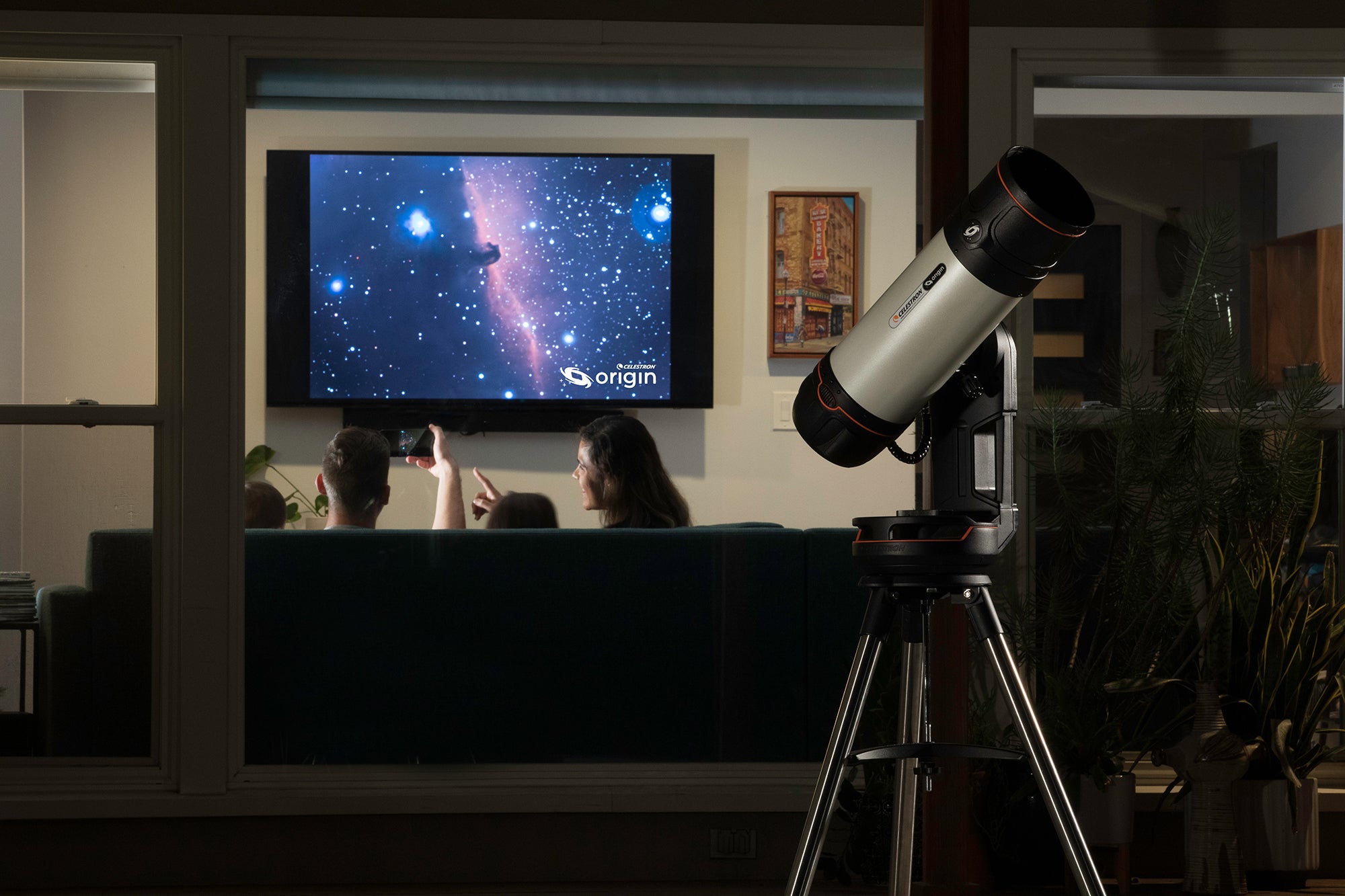
In early 2024 Astronomy Magazine Editor Dave Eicher spoke to Celestron’s CEO, Corey Lee, about a new product that seems poised to change amateur astronomy. Celestron’s Origin Intelligent Home Observatory is a 6-inch f/2.2 imaging system that incorporates a slew of revolutionary technologies to make capturing images of sky objects easier and more impressive than ever before. Years in development, the new telescope system will transform how astronomy enthusiasts record deep-sky objects and Milky Way vistas, and will change the way many people enjoy their hobby. The system enables capturing stunning images even from light-polluted skies. The conversation that follows illuminates a great deal about the Origin Home Observatory and reveals the story of how this product came to be.
Dave: Thanks so much for joining me today, Corey. The introduction of the Celestron Origin Intelligent Home Observatory is one of the biggest technological developments in telescope engineering in many years. Could you talk a little bit about the product and how it came about?
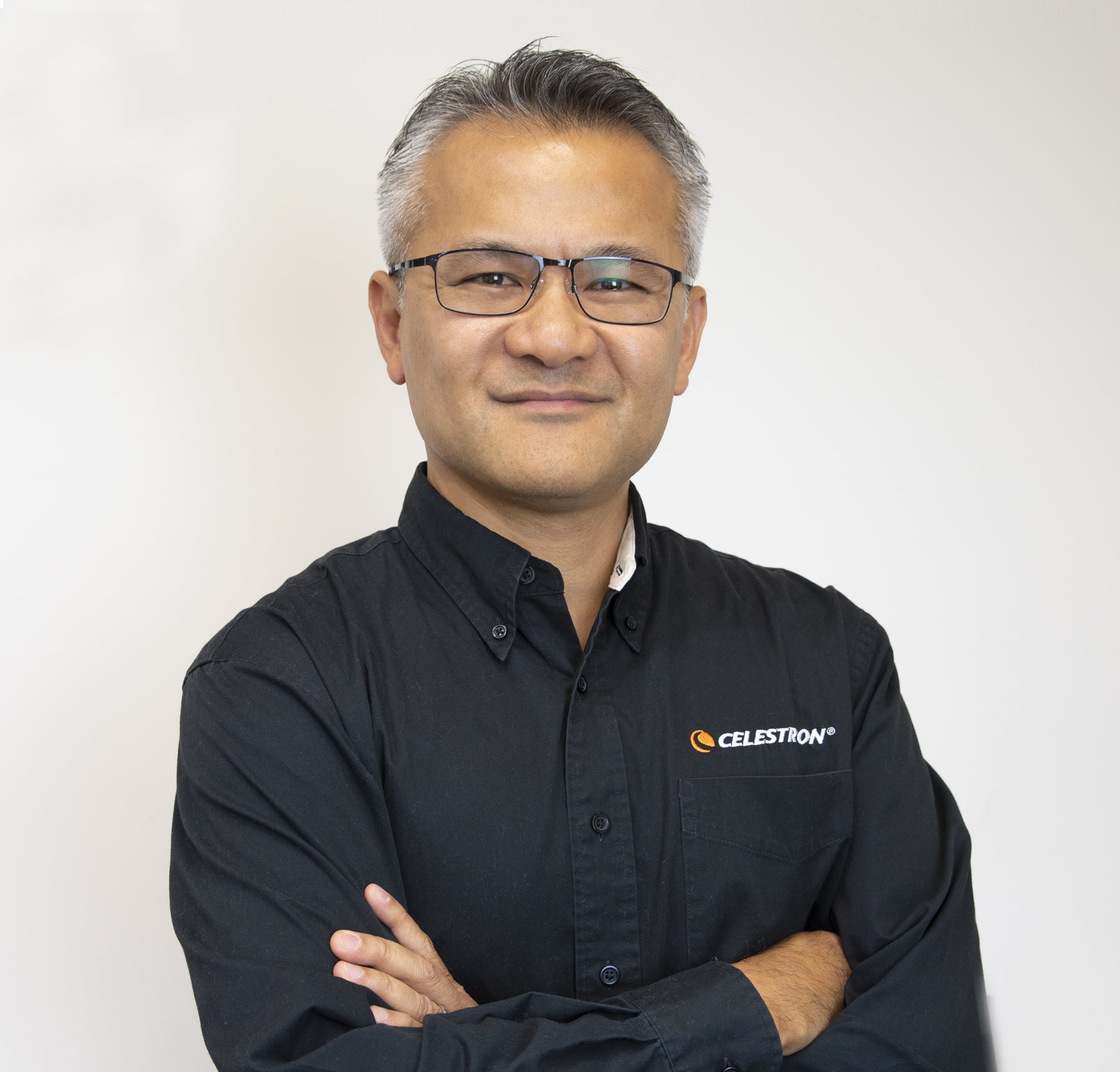
Corey: Sure, absolutely. So, I remember the first time I looked at a galaxy under dark skies and it was quite an experience. I’m thinking back many years ago when I was working on the Celestron Ultima 2000.
Dave: Sure.
Corey: We took one of the first samples we put together and drove it out to the middle of a desert, the middle of nowhere, two, three hours away from Los Angeles, under really dark skies. We were just testing that at that time and I was a young engineer who had just got into the business.
Dave: Yeah.
Corey: The first time I looked at the Whirlpool Galaxy under those dark skies, I just thought, “Oh wow — that was amazing!”
Dave: That’s a good object to go after for galaxies, yeah.
Corey: Right? I mean I never thought I could see anything like that galaxy. So that has always stayed with me — the fact that you can see all the spiral arms and all that. I thought that was awesome. So, I’ve always wanted to make that viewing experience easier for everybody. And not necessarily having to pack up everything, drive to the middle of nowhere, bring all your gear, etc.
With the improvements in technology over time, we realized that viewing really faint objects in the sky will become easier as time progresses. At that time we were still working on a lot of technology in a lot of different ways to make aligning telescopes or using telescopes much easier. If you combine what we were working on along with the development of these digital cameras, we thought one day we will get there — one day we’ll make this viewing experience much easier for everybody.
Since that time, we have developed StarSense auto-aligning technology. That, by itself, automates a lot of the processes needed to align the telescopes and just get a user going. Combining that with advancements in CCD and CMOS sensors, it was becoming increasingly clear to us that was where things were going. Here’s an interesting fact: Through the years, the project that turned out to be Origin had taken on different names, but it all started with the name of an eyepiece-less telescope. The concept was that with very sensitive sensors — a lot more sensitive than your eye — we could potentially allow you to easily see some of the most interesting faint objects in the sky. That’s how it all started — just with that vision. But at that time, we didn’t yet have everything that we needed, all the different technologies that were needed to put it all together. We worked on all of it for quite a few years.
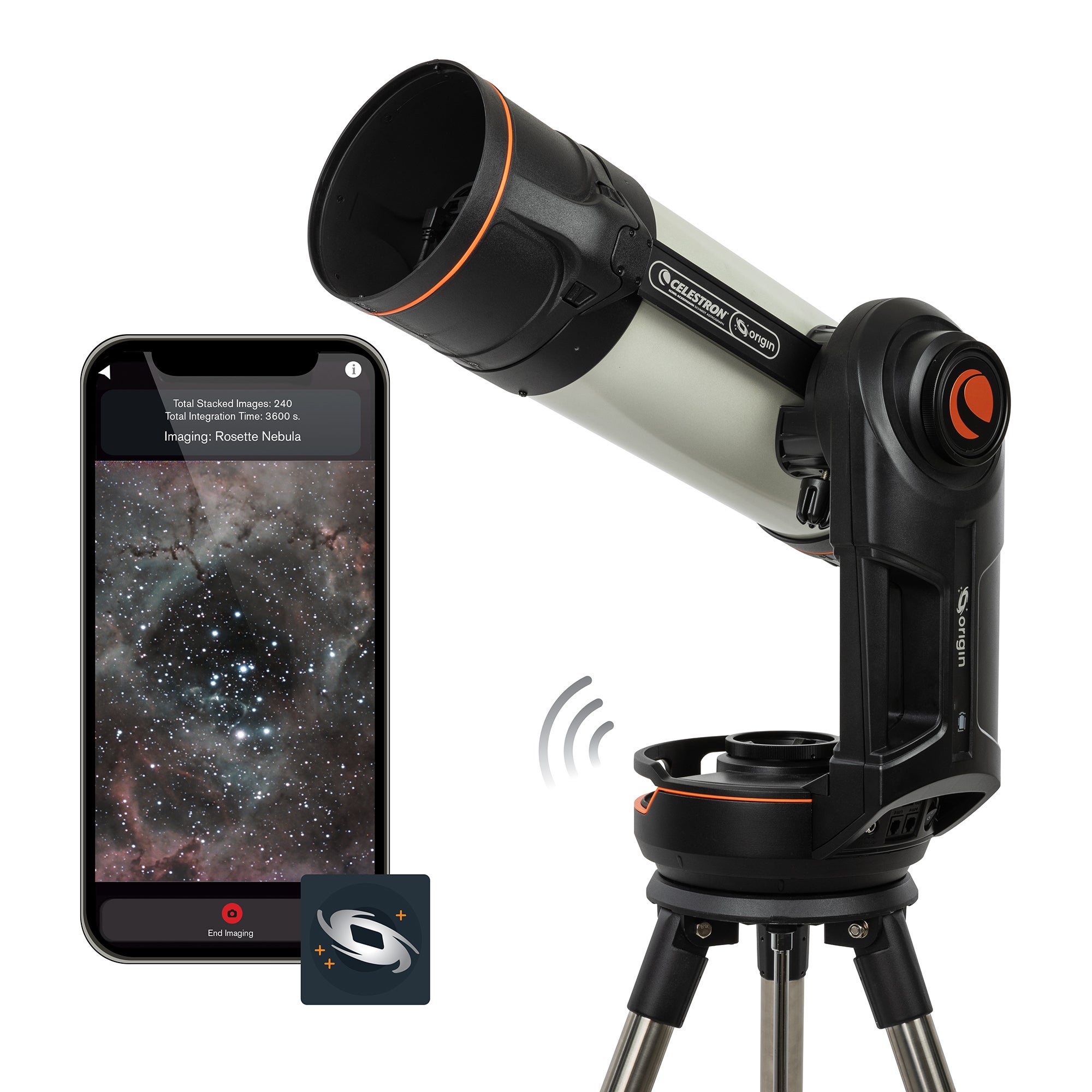
Dave: And this is really the crescendo moment in our time of a revolution that has been going on for a long time. As you said, challenges exist for absolute newcomers to set up a telescope, to understand it, to align it, to have it all perfectly set up. And this technology also is running hand in hand with astroimaging becoming easier in the last few years. This new telescope effectively takes a lot of the encroaching light pollution out of the equation too. So, the Origin really makes the experience of getting into discovering the universe much easier in multiple ways than ever before, doesn’t it?
Corey: You’re absolutely right and that’s actually what we’ve been aiming to do. Since the beginning of Celestron we’ve been wanting to make the hobby easier for everybody, to make it more accessible for everybody. If we go way back to when Tom Johnson started the company, he found a way to mass-produce Schmidt correctors. That, by itself, made the hobby more popular simply because all of a sudden there are high-quality telescopes that you know that people can buy. They’re compact and easy to use and that kind of started Celestron.
Ever since then, we have stayed with that vision to make the hobby easier. Therefore, you’ve seen some of the computerized telescopes that we have launched through the years and you know different technologies including StarSense technology that makes the hobby easier. So people don’t need to know the sky, right? So, staying on that path, we wanted to make it easier for people to say find and observe the Whirlpool Galaxy and see more details in the spiral arms within the Whirlpool Galaxy.
Dave: You’ve really brought several of these technologies that have been edging toward perfection together all in one package. Not only do you have easy alignment and setup which for someone who knows nothing about observing — and to whom the hobby can be intimidating a little bit at first — but now we have easy imaging and a telescope that diminishes the requirement to be in a purely absolutely dark sky. We also have a telescope that, once it’s set up, will find anything easily at the push of a button as well, which is a huge deal. As you said, you don’t need to become an expert and learn where the constellation Lacerta is or whatever obscure other part of the sky. This makes the whole process of using a telescope as easy as you could ever have dreamed of a generation ago.
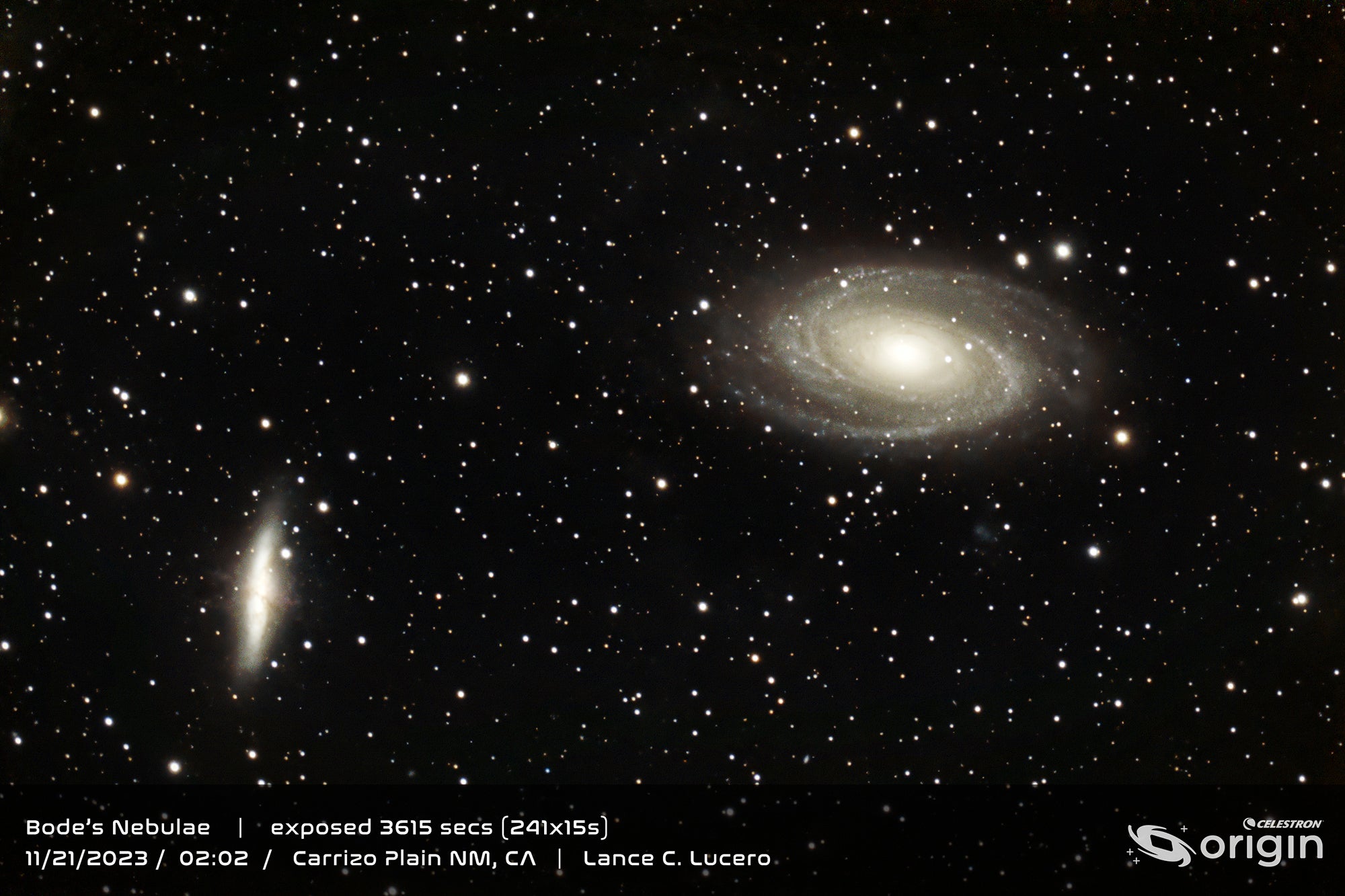
Corey: That is absolutely right. And that’s kind of been our goal. But at the same time, let me say, it’s been our goal to make it easier for us, for everybody to look at faint objects in the sky. But also, at the same time, as we put together this system, we realized that what we have is actually a serious astrophotography device. And we have a system that uses a RASA optical system, which is something that is really fast with large aperture. It’s embraced by the sky surveillance crowd. We have institutions and agencies using that to help to keep our satellites safe, right? And little did we know that it would be embraced by that crowd when we put this setup together.
Just speaking of RASA, initially the intention of developing the RASA was really for the Origin. When we conceptualized the whole idea of what turned out to be the Origin, we wanted a system that will give people a viewing experience that’s as close to real time as possible. I’ve talked a lot about viewing the night sky. Now, with conventional astrophotography, we take long exposures and, with proper image processing, you can see a lot of details. But this may take you a little bit of time, right? The traditional way of doing it is to spend hours collecting data. And then you go back to your home, spend the next two nights processing the images, and you get some really nice results at the end of it. But we wanted to make something that is as real time as possible. And that necessitates a faster optical system.
Now, we don’t necessarily want to say, here’s an automatic system that allows you to see deep-sky objects, you turn it on, get it going, but then you sit there and twiddle your thumbs for like 20 minutes before you see everything. So one of our requirements was really a fast optical system.
So we started looking at different ways to get there. We had what we called at that time, Fastar technology—our Schmidt-Cassegrain telescope with a Fastar optical accessory. And Starizona had taken this a step further, creating their Hyperstar accessory, which enabled our Schmidt-Cassegrain system to turn into a really fast optical system. So, we started thinking about this internally—what are some of the things that we can do? Can we come up with an optical system that maybe doesn’t require a Schmidt corrector?
We looked at different optical designs, but it turns out that the Schmidt corrector, enables you to put together a system with large-aperture, a fast focal ratio, and an easier setup than almost every other option we looked at. So we decided that we’ve got to pursue this. So we embarked on developing the RASA. At that time, we talked to different people. We enlisted the help of Dave Rowe, well-known within the industry. And he helped to get us going. And he came up with an initial design. We looked at it and thought, wow, this is great. And after that, we enlisted the help of Mark Ackermann. He helped us finish the optical design. So that became Rowe-Ackermann Schmidt Astrograph, or RASA. That really came from the vision of a fast optical system that worked well for the Origin type of product. It’s interesting, this product is called the Origin, but it’s actually the “origin story” for the RASA optical system.
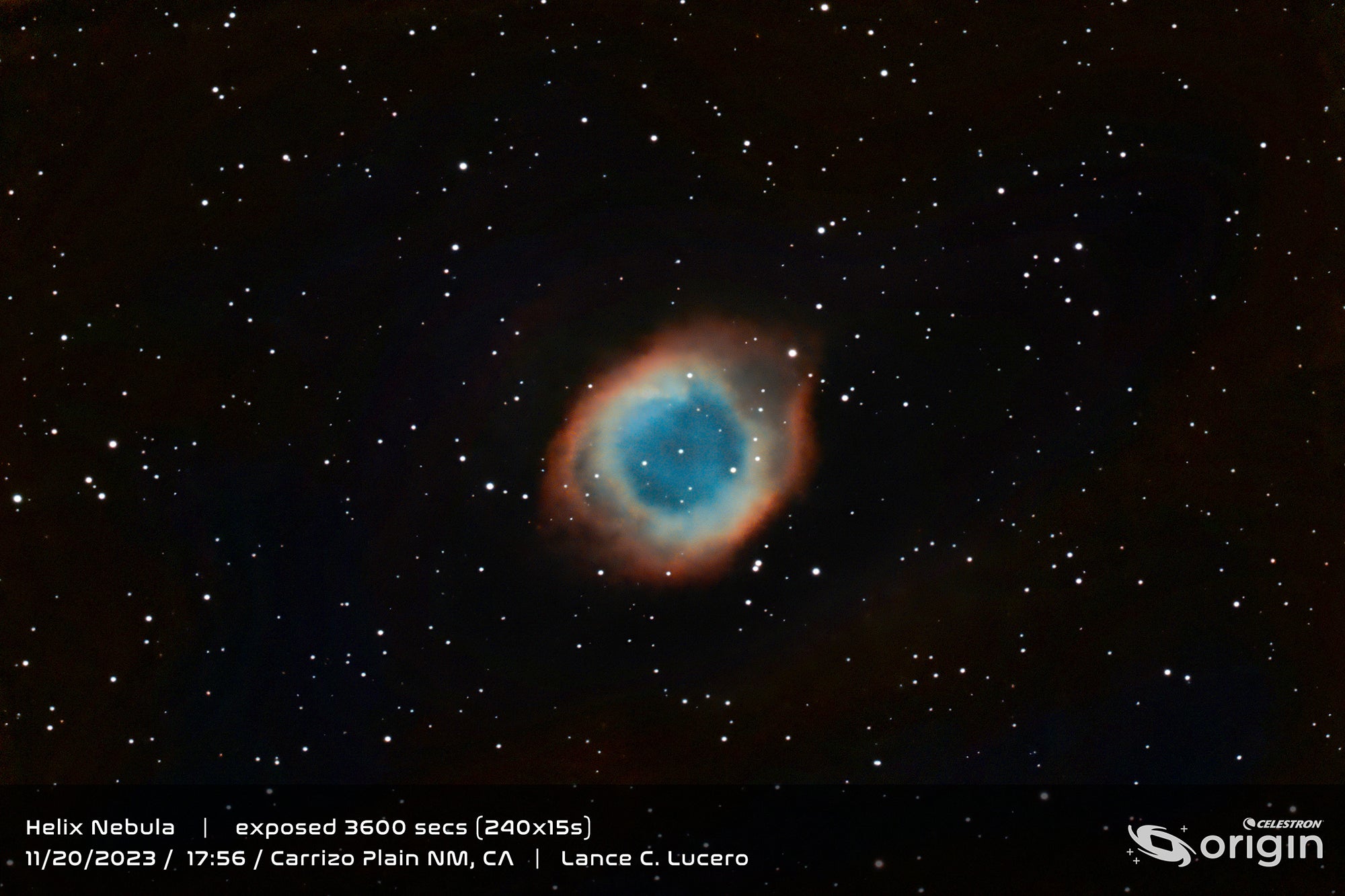
Dave: One thing, Corey, that excites me about the Origin is it has a relatively large mirror for an imaging telescope of this type at 6 inches. And as you mentioned, also a very short focal ratio. It’s f/2.2. So for deep-sky lovers, for imagers wanting to capture their own image, it offers a lot. And yes, people have taken images of the Orion Nebula and the Andromeda Galaxy for a long time and this and that. To capture your own images that you took of photons that traveled for two and a half million light-years, you know, that feels special. And this field of view is nice and big with this instrument here. Capturing star fields of nebulae — I think of a book that I just categorized this morning in my office. Barnard’s Photographic Atlas of dark nebulae, you know, this plays into right that kind of large-scale beauty of the universe. These kinds of wide fields are captured very, very well with a telescope of this scale, this so-called plate scale. Star fields of nebulae and galaxies are perfectly made for a system like this. You know, it would be ideal, I think, for getting your feet into the imaging business for just about any amateur astronomer who wants to discover the cosmos.
Corey: You’re absolutely right. With a fast optical system, it just makes imaging much easier. Time is an important thing. In multiple ways. I mean, near real-time imaging allows the hobby to become more social, actually, right? So I’m not necessarily spending hours collecting data, and then spending hours doing image processing. Everything can happen in real time, including data collection and image processing. That’s part of the reason why the Origin has this AI image processing function that allows everything to be available in real time. So if I have the Origin looking at the Orion Nebula, five minutes later, I can be looking at that on my tablet, as well as the friends I have with me. We can all share the views. They can look at my tablet. They can be looking at the same Orion Nebula on their own device. So we, in a sense, we can have a local star party in my living room. My Origin is in the backyard. So it can be more of a social event—and I think that’s important. It is important for this hobby to have an evolution, right, into something that is more social, not necessarily just with your friends next to you, but the fact that it’s now on your mobile device, something you can share with multiple people. I can share images with my friends. So that’s all part of the vision — it’s all part of what we wanted to do.

Dave: And for so long, serious imaging has been a solitary activity that has pushed you away from other people. And so much pleasure in the hobby of amateur astronomy, as with most hobbies, comes from sharing that togetherness of the excitement of what we know about the universe and what we’re finding out about it together. And you’re enabling this to happen in essentially real time, as you say, with images that go directly to a phone or a tablet, if you will, in essentially real time with relatively short exposures too. So this really revolutionizes things in a human way, as well as a technological way, which altogether, is pretty incredible.
Corey: That is part of our goal. We wanted to make sure that our tool, this Origin intelligent home observatory, can become the tool for observers to learn the night sky, for people to actually bring their friends and families together and show them the cosmos. It can really help people to create social activities among friends and family. And, at the same time, this is a device that doesn’t require knowing much about night sky or photography. You can turn it on and use it at the very same night. But at the same time, because it’s a serious instrument, it’s got advanced features that will grow with you as you grow in your hobby. For example, you can use standard astronomy filters or schedule your imaging sessions in advance. You can even schedule your imaging, go to bed, and by tomorrow you can wake up and see your images!
Dave: Yes.
Corey: At the same time, you have the ability to access all the raw files, so you can do your own processing if you choose. But if image processing isn’t your favorite activity, the Origin’s AI image processing algorithm does a pretty fine job to allow you to see amazing details.
Dave: Yes.
Corey: But at the same time, there are a lot of people who are really good at image processing. And if they want to do their own image processing with the Origin, they can. They will have access to all the raw files and they can have add their own personal touch. For somebody who doesn’t want to deal with that, they don’t have to. For somebody who wants to, they have the ability to use this as a serious astrophotography device.
Dave: Yes, as you said, you can get a really nice image at the outset almost instantly, but you can also go crazy in Photoshop over hours and days if you want, to customize your image processing as some of the more advanced image skyshooters would like to do. And another revolutionary point here is, back when I was young, long ago, there was an incredible servitude. It took forever not only to learn the shooting and you had to serve sort of an apprenticeship, getting to know all this and working out all the details and getting around all sorts of problems which now are eliminated by this system. But you also had to put in a lot of time on the back end because even in the last half generation or generation, the digital darkroom conventionally takes a lot of work and knowledge. You can become a Photoshop master now if you’d like to, but with this instrument you get a nicely processed image right out of the gate, which is again unprecedented and hasn’t happened up until now.
Corey: You’re absolutely right. That is part of the reason why we wanted to spend a lot; we spent considerable time and resources and developed that part of our system, the AI image processing algorithm that’s built-in.
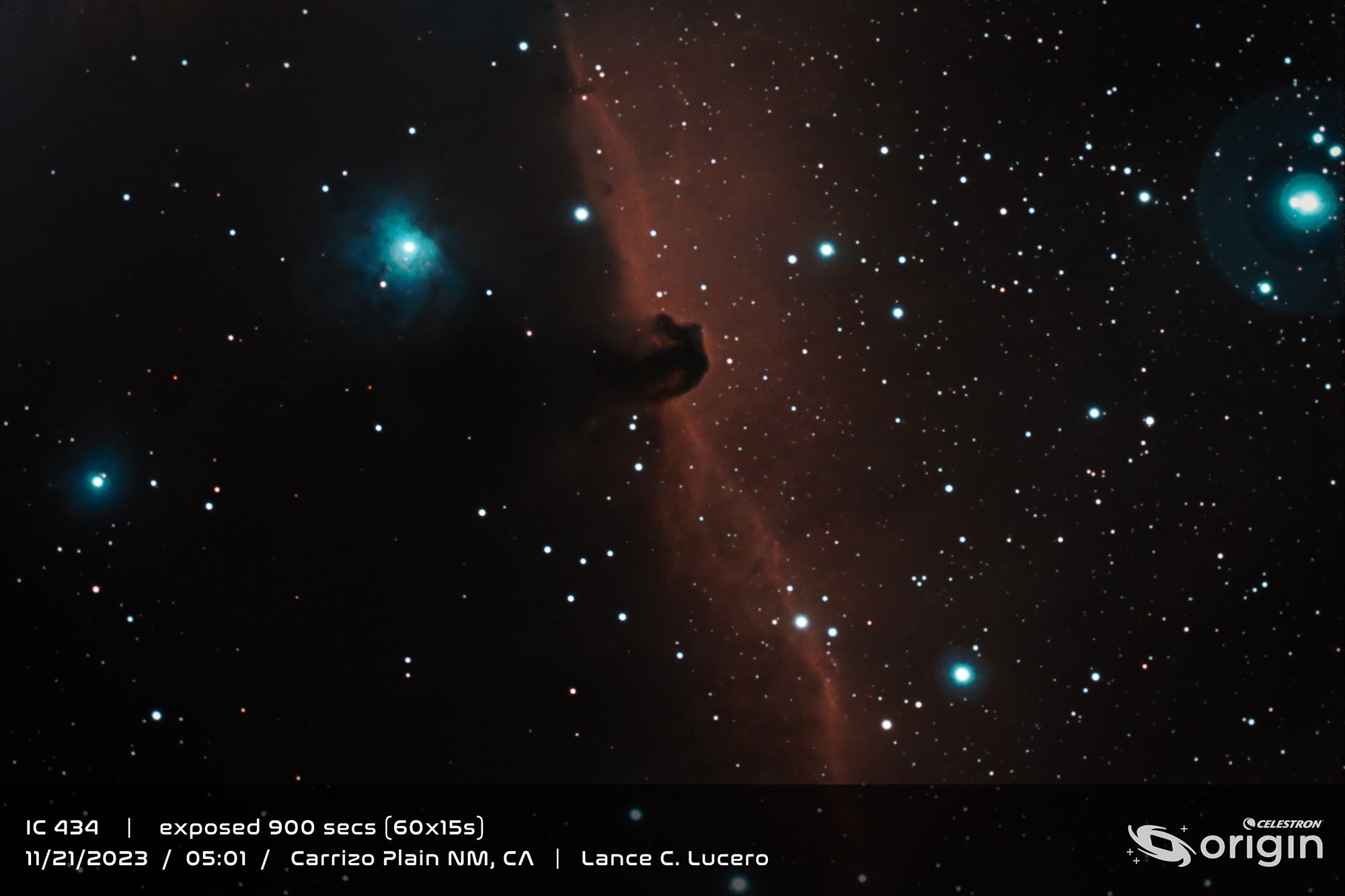
Dave: Well, this is a huge moment for the hobby of astronomy, I think, with this instrument rolling out. Congratulations, Corey, to you on this and for the culmination of what has been a long journey of a lot of work of engineering and production.
Corey: It’s very exciting. Especially considering this is the vision that has been driving our product development and engineering efforts for years.
Dave: Yes.
Corey: We knew years ago that this is what we have to bring to the market, but we didn’t necessarily have all the different pieces of technology needed to pull together yet at that time.
Dave: Yes.
Corey: So to develop all that, we knew it would tie up engineering resources and time. So we had our hopes and dreams, but we simply couldn’t shut down all other new product development efforts for a few years just to develop the Origin. That wouldn’t be good for our customers, it wouldn’t be good for our dealers, and it wouldn’t be good for industry as a whole.
Dave: Yeah.
Corey: We didn’t have that option. So we had to figure out how we could actually take this on, take on this big project while continuing to push new innovative products our customers have really come to expect from Celestron.
Dave: Yes.
Corey: So we chose a path where we identify each of the new pieces of technology needed, and we had to develop and acquire all the different new technologies, basically one at a time.
Dave: Yeah.
Corey: We launched new products with each one of those new technologies, or new acquired technologies along the way. You can say many new innovative products were created because of our pursuit of the Origin vision. At that time, of course, we already had our StarSense autoalignment technology, but we still had to develop others. We talked about RASA already, but at the time too, we also had to develop wifi-enabled telescopes, which represent our ability to control telescopes through a quality mobile device app. That was essential to arrive at the Origin vision. And a couple other things, like motorized focusing, and even a dew control system — all that had to be developed. And for anybody who’s followed Celestron and our products, and new product introductions over the past few years, you can see that, oh yeah, now this all makes sense.
Dave: Yes.
Corey: The RASA, the Evolution, the Celestron Focus Motor, and the dew prevention system all came out over the past few years. They were actually all developed just with our eye looking toward the Origin vision.
Dave: We’ve seen some revolutionary pieces of the puzzle rear their head in other ways that were part of this master program that was going on for a long time. And we see all of those revolutions and technologies now coming together in the Origin at once.
Corey: Yeah, it’s true. It’s very exciting for us. It’s kind of like a grand finale in a way that defined a period of product development here at Celestron.
Dave: Yes.
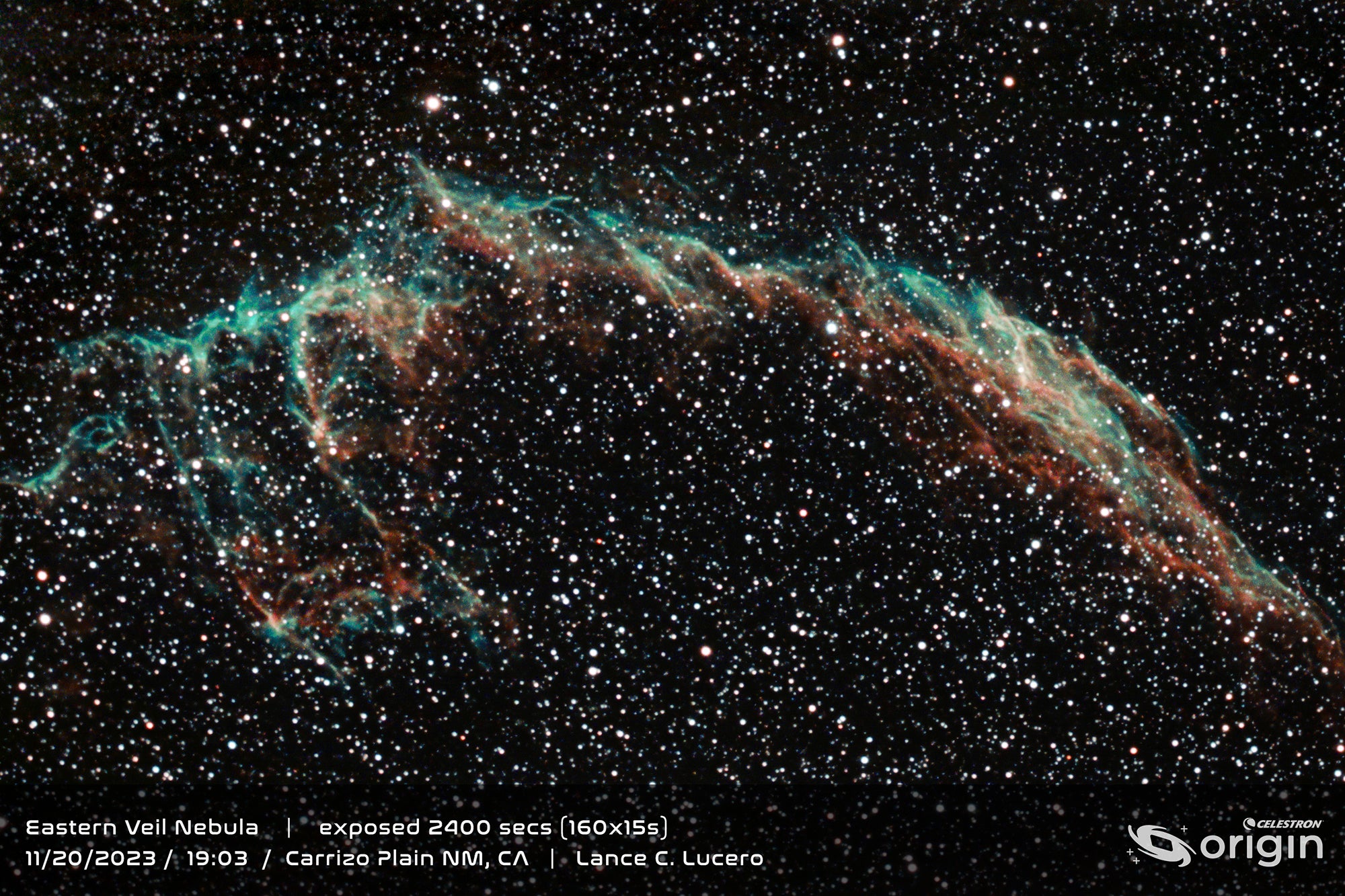
Corey: And we’re not done. There are many more new products coming in the future. But this marked a big milestone for us.
Dave: Well, this is huge because the opportunity to turn people on the cosmos is big — you go to star parties and talk to people who are just discovering the stars. We’re so busy running around on this 2D surface of our planet and there’s this realization that’s fantastic to see in people when they realize that, oh my God, I can go out there and I can see objects in a telescope that are far away. They realize that several hundred billion stars exist in our galaxy and there are a hundred billion galaxies in the universe. And this light bulb goes on and you can see the realization of where we are on this planet and what it means to be alive and made of this stuff of the cosmos. And then they are addicted and they love this hobby. And I think this is taking that sense of realization and discovery and empowering people like never before with a telescope. I think with the Origin we’re gonna see a lot of people turned on to this hobby. And I can’t wait to see some of the images that get produced over the coming months as well because of your master vision and this product.
Corey: It’ll be incredibly gratifying for entire team here at Celestron if the Origin can actually enable a lot of people to embark on that journey, the journey that you just talked about.
Dave: I think it certainly will. I think we can say, it’s written in the stars.
Corey: That’s a really good one, Dave.
Dave: Corey, where can people find out more about the Origin Intelligent Home Observatory?
Corey: So the best place to look for information right now is our own website, Celestron.com. There’s a lot of information on the product. And some really well put-together videos that explain what it is and also what it can do. So I’ll encourage anybody to go on Celestron.com/origin and just visit the Origin page.
Dave: Outstanding. Well, this is an historic moment, I think, in our hobby and the thing that we love. And I thank you so much, Corey, for joining me today and discussing this. I’m proud to be talking about it with you. And I think we’re gonna see a new phase of this hobby beginning because of your vision.
Corey: Thank you, Dave. Thank you for your time. And yes, we are very happy Celestron and Celestron’s Origin can help to usher in this new phase of the hobby.
Dave: Thanks so much, Corey, and we will certainly follow up and be in touch and watch the exciting developments to come.
Corey: Thank you, Dave.









